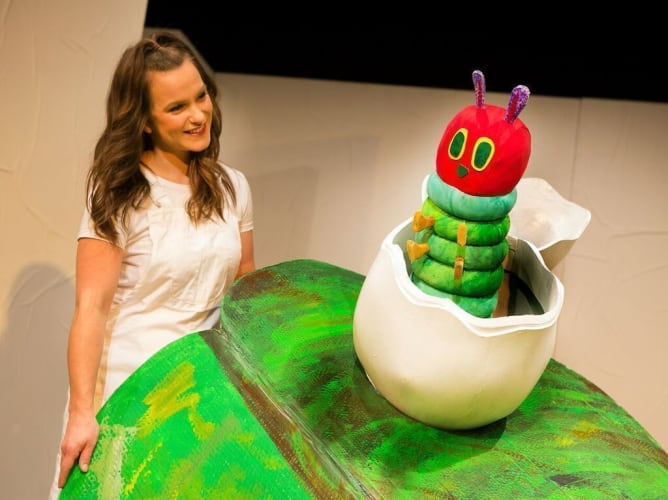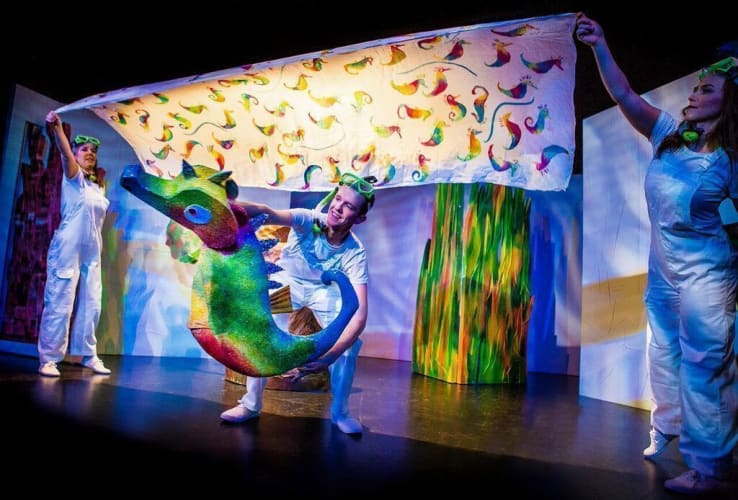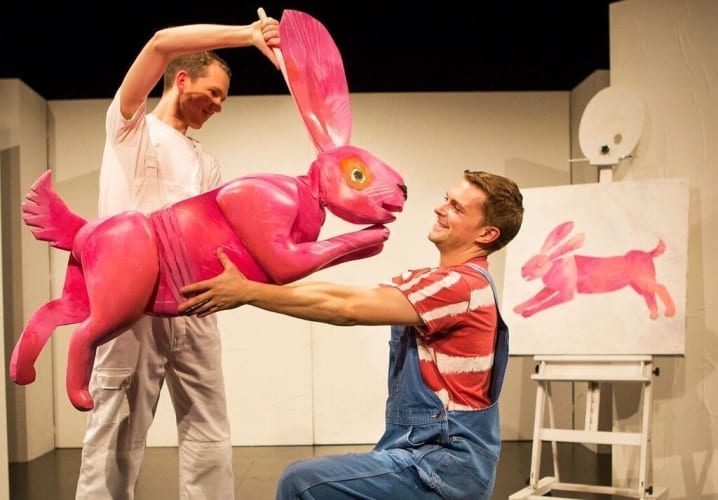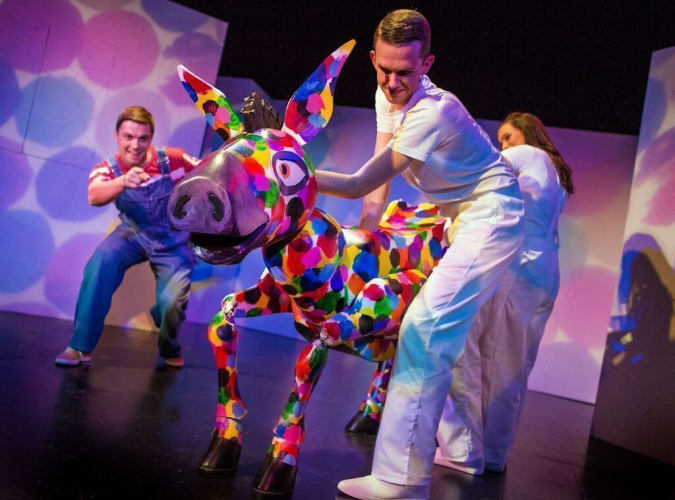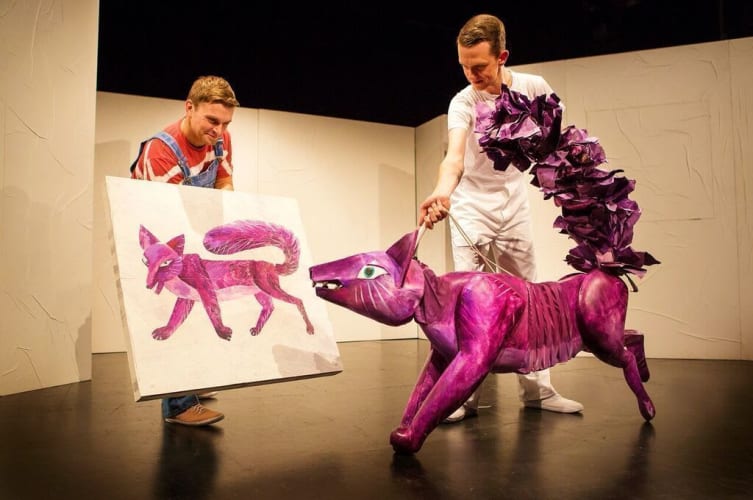Although named after his best-known book, this 50-minute entertainment for youngsters features four of his stories brought to life with giant puppets in a way to fascinate children and stir imagination.
First staged in Australia, it has already seen success in New York and now makes its West End debut. The idea of director Jonathan Rockefeller, with puppetry direction from Eric Wright and music and sound by Nate Edmonson, it has a deceptively simple staging.
Designer David Goldstein uses what looks like a simple set of white panels on which he’s projected coloured spots. Copies of some of Carle’s books are on the floor centre stage and two of the performers enter, pick them up, are amused by what they find inside and share that with the audience, so source is established. The performers are dressed entirely in white; that way, as puppeteers, they blend more easily into the background but there is never any pretence they are not there.
The first story, The Artist Who Painted a Blue Horse, isn’t so much a story as a succession of images and characters. Andrew Cullimore as The Artist chooses a colour—blue—and begins painting. A puppeteer floats appropriate coloured silk through the air while as he moves turns the easel upstage to continue painting then back again, to revealed a completed blue horse.
A second colour, red, is now chosen but when the canvas is turned its subject, a big red crocodile, comes on as well. These are followed by a yellow cow, a pink rabbit, a green lion, an orange elephant, a purple fox, a black polar bear and a polka-dotted donkey. Each one displays more activity than the one before it and more involvement with its creator: the pink rabbit leaping, the donkey performing a whole dance routine with him.
The artist is a bit full of himself: he declares, “I’m a very good artist,” but his pomposity slows things down so the audience has plenty of time to take things in.
Now there’s a ripple effect in the lighting and cut-out shapes slide on from the side, fronds of seaweed, while clumps of reeds and rocks come on too. Flurries of bubbles are blown out into the audience. The scene is now underwater and we start the next story: Mr Seahorse.
There are no humans in this one, or any that follow, though the puppeteers tell the story and voice any necessary dialogue. We go on a journey with Mr Seahorse and meet a succession of sea creatures. They are all fathers who are being responsible parents; they look after their females’ eggs to see them through to hatching or watching over their young ones.
It may not be good natural history for it mixes fresh- and saltwater animals and I’m not sure all these exotic fish are real ones, but they look amazing and there is a message for dads there about gender duties.
Book three is The Very Lonely Firefly, a story about a firefly who is trying to find others of his own kind. He sees all kinds of lights that could be fireflies but they turn out to be lamps, candles, torches, cat’s eyes or dog’s eyes shining in darkness, a lamp or a lantern until at last there is a whole flock of lights that really are fireflies.
When the moon rises, it is time for the title story as it shines down on a giant green leaf with a big egg on it that when day comes hatches out into a green caterpillar with a red head that is, as every child here seems to know, very very hungry.
You’ve probably noticed that there has been a repetitive element in each of these stories and that is something children love. Now, as on day 1, the caterpillar eats an apple, day 2: 2 pears, then day 3: 3 plums but is still very, very hungry—they are shouting the words out themselves in chorus.
By the time we reach day 5 and 5 oranges, they are counting aloud as he devours them. No one has done anything to directly encourage them. This is a spontaneous reaction triggered by involvement. When at last his hunger is satisfied and Mr No-longer-hungry Caterpillar stops eating, he turns into chrysalis and then (here’s the climax) of course into a butterfly, a beautiful stage-filling butterfly, drawing delight from the children and happy applause.
The Very Hungry Caterpillar Show is as simple and direct as Eric Carle's books but brings them to life in three dimensions in a way that is very child-friendly.
After this London season The Very Hungry Caterpillar Show will embark on a national tour.
